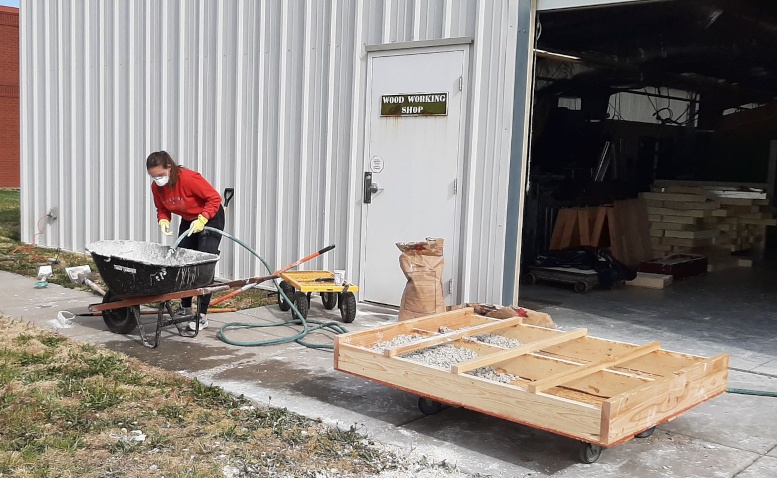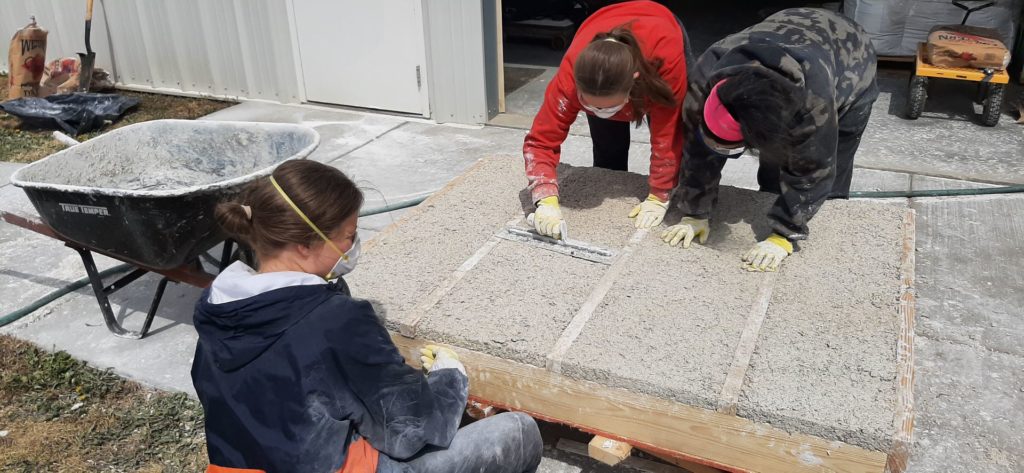Hempcrete failed to surpass petrochemical-based foams in insulation performance but can still be a viable replacement for traditional construction materials in sustainable “net-zero” buildings, experiments carried out at Kansas State University have found.
Graduate students in a first-of-its-kind seminar led by Michael Gibson, a professor in the university’s Department of Architecture, looked at the use of hempcrete in floors, walls, ceilings and roofs.
“There is a steep learning curve with this material,” said Gibson. “In the end, we learned that hempcrete is a great material with a lot of immediate potential for use in Kansas, especially with industrial hemp farming growing so quickly,” Gibson said.
Net-zero buildings produce enough energy on-site to meet or exceed their total energy consumption and eliminate greenhouse gas emissions.
Energy modeling
Energy modeling showed that while it is difficult to match the performance of conventional insulation foam with hemp-based materials, the use of hempcrete in walls, and batting made from hemp bast fibers in ceiling structures, could combine to achieve performance levels sought in such highly efficient buildings.
Gibson’s broader research into net-zero energy housing in Kansas’ climate has demonstrated that heating, ventilation and air conditioning (HVAC) loads related to insulation make up only about 20% of annual energy costs (lighting and appliances contribute 15% and 65%, respectively).
“Thus, in a well-designed net-zero house that uses passive design, load reduction, and efficient building systems, modest changes in insulation level don’t have a significant impact on net-zero capability,” Gibson said. “Hempcrete and hemp insulation could still get the home within 20% to 30% of a foam-insulated house and could result in a successful net-zero energy design.”
Flooring applications
One group of students in Gibson’s seminar topped hempcrete blocks with concrete for flooring, then looked at R-values, critical indicators which reflect a material’s ability to resist heat transfer through conduction; heating and cooling loads; and thermal buffering, in which a material mass absorbs and releases heat.
Adding a thin concrete top layer to a floor of hempcrete blocks significantly improved the thermal storage capabilities of the floor assembly, according to computer-modeled results.
The students found six inches of hempcrete with a two-inch layer of concrete provided performance similar to a four-inch concrete slab that is continuously insulated with R-10 foam. Students found that progressively thicker hempcrete in flooring increased energy consumption as the interior material became increasingly distant from ground temperature.
The experiment also showed that concrete with a high cement ratio bonded with hempcrete blocks better than a range of other materials tested, including stone aggregate, recycled porcelain, and a corn cob and cement mixture.
Hempcrete blocks in the floor could also be part of a prefabricated solution for net-zero and other low-energy buildings, Gibson noted.
Gridded wall framing

A second seminar team developed a grid to serve as load-bearing structural framing and sheathing for walls which showed performance equivalent to commonly used staggered-stud and slip-formed hempcrete framing methods. The grid technique could also be incorporated into prefab construction, Gibson suggested.
Experiments showed that easier-to-build eight-inch thick hempcrete walls, while being 18% less efficient than 12-inch thick walls, resulted in only a modest reduction in energy efficiency in a small home.
“Though slip forming and staggered stud walls add complexity to avoid thermal bridging in the framing, the easier-to-build grid wall has a U-value only 6% higher than a slip formed wall and only 4% higher than a staggered stud wall of similar thickness,” Gibson said, noting that loss could be overcome by adding one photovoltaic panel to the building’s overall energy infrastructure.
Bast batting overhead
While the seminar is continuing to study replacement material for petrochemical-based foam insulation to prevent condensation in unvented ceilings and roofs, Gibson recommended that bast-fiber batting from hemp is preferable to hempcrete for those parts of a building. Models developed by the students showed a minimum thickness of 12” of hempcrete would be needed in a ceiling to make a net-zero home practical, bringing excessive weight.
“The future architects graduating from this class can really change the face of environmentally friendly building and teach the country how to stretch and save our natural resources. Construction is one of the many uses of industrial hemp and it has the potential to make an enormous impact on our carbon footprint,” said Sarah Stephens, CEO at Midwest Hemp Technology, which provided hurd for the UK seminar.
The seminar was assisted by Angel Romero Jr., who has experience with stucco, and who recently launched a hempcrete construction business in Dodge City, Kansas.

